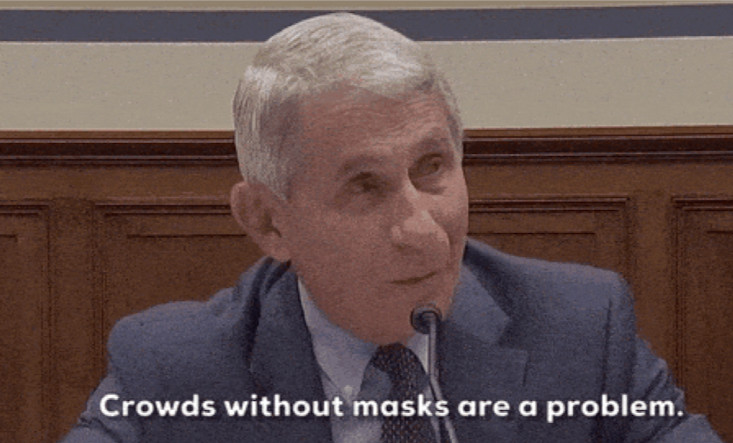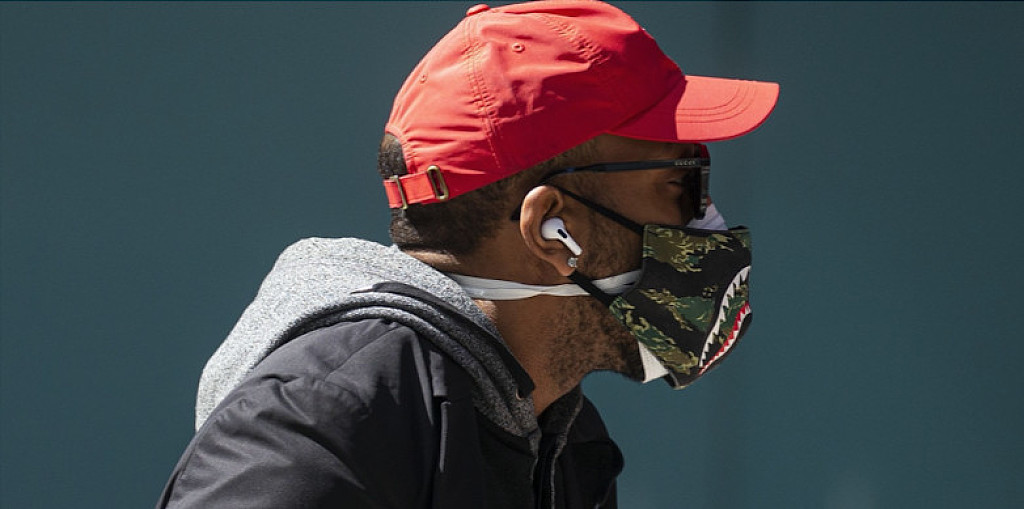Running News Daily
Running News Daily is edited by Bob Anderson. Send your news items to bob@mybestruns.com Advertising opportunities available. Train the Kenyan Way at KATA Kenya and Portugal owned and operated by Bob Anderson. Be sure to catch our movie A Long Run the movie KATA Running Camps and KATA Potato Farms - 31 now open in Kenya! https://kata.ke/
Index to Daily Posts · Sign Up For Updates · Run The World Feed
People Are Double-Masking More and More and, Sometimes, That Includes Runners
While the CDC hasn’t officially recommended it yet, here’s what experts want you to know to stay safe and slow the spread
From healthcare workers to politicians, double-masking is the latest coronavirus trend. In a press briefing Wednesday February 3, National Institute of Allergy and Infectious Disease (NIAID) director Anthony Fauci, M.D. said that double masking could be a common-sense approach in mitigating the spread of COVID-19. He even added that he wears two masks in situations where he won’t be able to sufficiently socially distance himself from others. But does that mean runners should think about wearing two masks when training?

Fauci said the CDC will continue to update recommendations as more research is completed, but in the meantime, here’s what you need to know about double-masking, according to David Nieman, Dr.PH., health professor at Appalachian State University and director of the Human Performance Lab at the North Carolina Research Campus, Brian Labus, Ph.D., MPH, assistant professor in the School of Public Health at the University of Nevada Las Vegas, and Matt Ferrari Ph.D., associate professor of biology in the Eberly College of Science, and a researcher with the Center for Infectious Disease Dynamics at Penn State.
Why are people double masking?
First and foremost—the focus is still on using high-quality masks that will protect the wearer and others, explains Ferrari. That means it’s important to find a mask with good filtering material and a proper fit. Your mask should cover your nose and mouth, and fit snugly to the face with no gaps. (Get more helpful mask-wearing tips from the CDC here.)
“Two masks might be the way to do that, but one really good mask, say a KN95, may still be better than two single-ply gaiters,” Ferrari says.
For context, an N95 respirator, the U.S. standard that should be reserved for healthcare workers, and the KN95 mask, the China standard, both filter 95 percent of aerosols and protect the wearer better than a single layer fabric mask.
“What we are usually talking about with double-masking is doubling up on the fabric masks to increase filtration,” Labus says. But the caveat is, both masks need to fit properly.
And, adding a less-effective fabric mask over an N95 or KN95 mask won’t provide much additional protection. However, medical professionals sometimes do this to help extend the life of the masks, as PPE has been in short supply.
When might double-masking be necessary?
Wearing a well-fitting mask (or two) may be especially important for protecting others and yourself if you are in a setting where people are close together or breathing heavily, such as a gym.
“If you’re an athlete and going to be with other people indoors I would highly recommend double-masking,” says Nieman.
Currently, the CDC suggests that you wear masks with two or more layers of washable, breathable fabric, and avoid using those intended for healthcare workers, such as N95 or surgical masks. However, opting for a KN95 is okay, because U.S. healthcare workers don’t use that mask, explains Nieman.
“It gets old saying it, but if you have the luxury of avoiding settings where you would need to double-mask—indoors, poorly ventilated, crowded—then avoiding those settings is better than two, or three, or four masks,” says Ferrari.
For runners, this may mean avoiding a crowded gym and instead opting to run outside where there is plenty of space for distancing or setting up a home gym space.
However, if you can’t avoid indoor settings with other individuals (say, for work or to care for others) then double-masking may provide the extra protection to reduce risk in high-density indoor settings.
What is the best way to double-mask?
“As with a single mask, it’s about having a good fit to your face,” explains Labus. Ensure that your mask or masks cover from above your nose to below your chin, and that air is not escaping around the sides.
“In addition to the extra filtration provided by the second mask, [doubling] can also allow the mask to fit better on your face, covering any gaps from the first mask,” Labus says.
But two bad masks are not necessarily better than one good one. In fact, the healthcare industry has shown that one, high-quality, well-fitted mask can be very effective, says Ferrari. And, leakage tends to be a problem in masks, so even if you’re wearing two masks, if they don’t fit well, they won’t be effective at protecting others, says Nieman.
What is the best mask to wear while working out?
That all depends on what the masks are made of. Masks like an N95 or KN95 are designed to filter out much smaller particles than a cloth mask and require more effort to breathe through. So, even if you are just wearing a single high-filtration mask, it’s likely not going to work to wear during intense exercise, because once you begin sweating, breathing will become more difficult.
It also depends on what type of exercise you are doing. If you’re lifting weights and don’t expect to get breathless as you would when doing treadmill intervals, a KN95 and cloth mask or two cloth masks may work just fine, says Nieman. But, once you start to sweat and breathe harder, that’s when it can get tricky.
Nieman recommends finding a mask that is at least double-ply with tightly woven fabric or one that is specially made for exercising, such as the Under Armour Sportsmask, which is used in his lab when tests are being done.
“Try to focus on workouts and activities where the mask isn’t the limiting factor. Outdoors and distanced is better for everyone,” says Ferrari. This might mean getting creative with your workouts if you live in a cold climate or trying other socially-distant cross-training activities like Nordic skiing.
The bottom line: Remember, the CDC has not yet changed their recommendations and still recommends a single fabric mask that’s at least two layers. While some are starting to wear two, it is still okay to wear a single mask, says Labus. That second mask can provide some extra protection, but wearing any mask is much, much better than not wearing one at all.
“If you’ll be near others, or out running with friends, wear a mask. If you have to do an indoor workout with others in the gym make sure you’re masked up with the best filtering, best fitting mask(s) you’ve got,” says Ferrari.
by Runner’s World
Login to leave a comment




